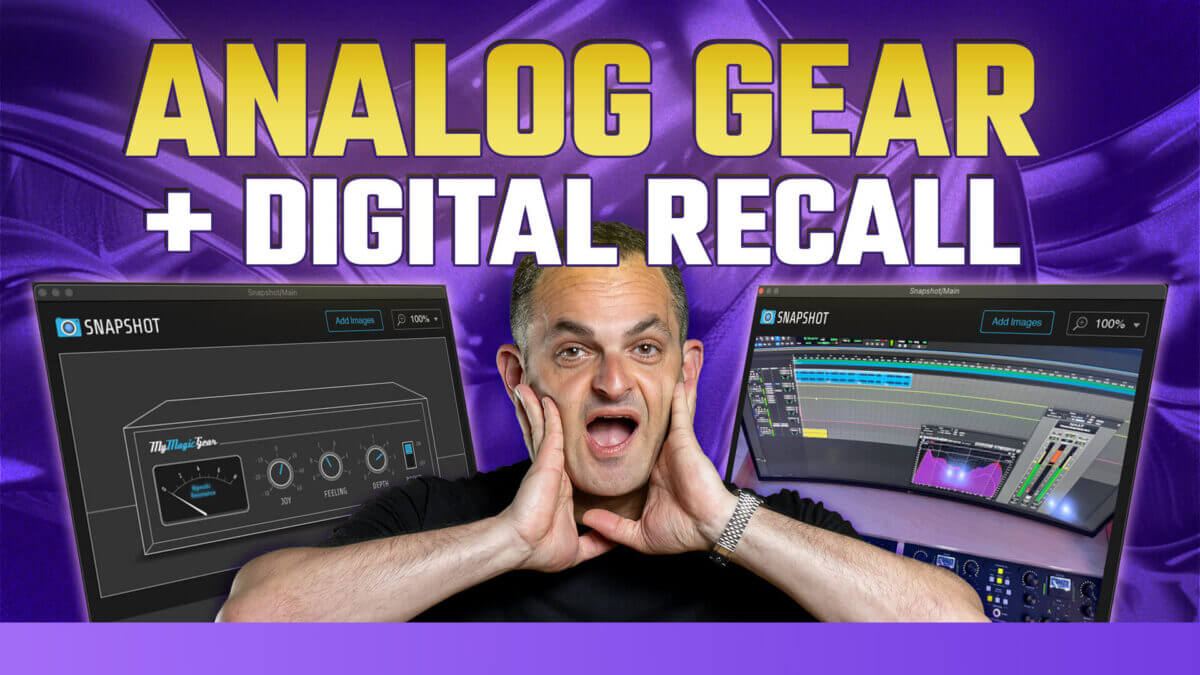
Save Analog Gear Settings in Your DAW with the Snapshot Plugin
In this video, I dive into one of the most helpful tools for anyone working with analog hardware – the Snapshot plugin. Whether you’re managing rack gear, synth settings, or even mic placements, this plugin allows you to easily capture and store your gear’s settings directly within your DAW session. This can dramatically streamline your workflow, especially if you’re using a hybrid setup that combines both analog and digital gear.
The Snapshot plugin gives you the ability to save and recall all the details of your settings, ensuring you can keep your sessions organized and avoid losing precious configurations. In this post, I’ll take you through the highlights of the video, where I break down how to set up this plugin and use it to its full potential.
Setting Up With Analog Hardware, Pro Tools, Ableton, and UAD Console
One of the most common challenges in a hybrid studio setup is managing the flow between your analog and digital environments. In the video, I show how the Snapshot plugin fits right into that workflow. Whether you’re using Ableton Live, Pro Tools, or the Universal Audio Console, the plugin allows you to visually document and recall settings for outboard gear. This is especially useful for maintaining consistent tones across sessions, referencing previous patches, or collaborating with others who need to replicate your setup.
You’ll see how Snapshot can sit neatly in your effects chain or on a return track, providing a visual log of your external processing chains. Rather than writing down your settings or storing phone pics, you get a clean, centralized solution built right into your DAW project.
Pros and Cons of the Snapshot Plugin
Like any tool, Snapshot has its strengths and a few limitations to be aware of. On the plus side, it’s extremely simple to use, lightweight, and doesn’t interfere with your audio signal since it’s not an effect plugin—just a visual aid. The ability to save multiple images per instance, tag them, and recall them quickly is a huge benefit for producers who constantly tweak analog gear.
On the downside, Snapshot doesn’t connect digitally to your hardware—so it won’t auto-recall settings. It’s more of a visual recall system, meaning you still have to physically match your knobs and dials. But for most hybrid producers, that trade-off is more than worth it for the organizational benefits it brings.
Snapshot Plugin Overview and Practical Use
In the final part of the video, I offer a walkthrough of the Snapshot interface. You’ll see how to capture images, label your gear or preset, and organize snapshots within your session. This is where Snapshot really proves its value. If you’re the kind of producer who uses analog synths or outboard compressors, Snapshot makes it effortless to catalog your settings—no more flipping through notebooks or trying to remember mic angles.
You can also use Snapshot to document mic placements during recording sessions, helping ensure consistency if you’re tracking over multiple days or recreating a setup for a different session. It’s a flexible utility plugin that’s not flashy — but incredibly practical.
If you want an inside look at how I personally use Snapshot in my hybrid studio setup — you may want to watch the exclusive members-only video that goes deeper into how I set up and manage analog gear workflows inside my sessions.
Also featured in the video is Freshcobar & Lavelle Dupree – “Jump”, released on NOS Recordings. Be sure to stream or download the track and hear how hybrid production techniques can help shape professional-quality sound.
The Snapshot plugin might not alter your audio, but it can seriously improve how you work with analog hardware. If you’ve ever struggled with keeping track of your rack gear or synth settings, this tool is a game-changer. It brings organization and clarity to your sessions, especially in hybrid setups that blend analog and digital elements. Whether you’re an engineer, producer, or synth lover, adding Snapshot to your workflow can save you time and frustration—without disrupting your creative process.
If you found this video helpful, don’t forget to like, comment, and subscribe to Distinct Mastering for more music production tips and plugin breakdowns. I’m always sharing ways to improve your sound, speed up your workflow, and keep your sessions running smoothly.
